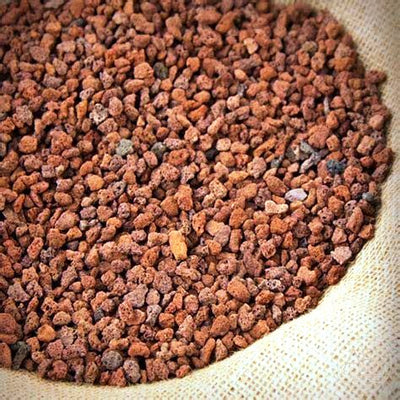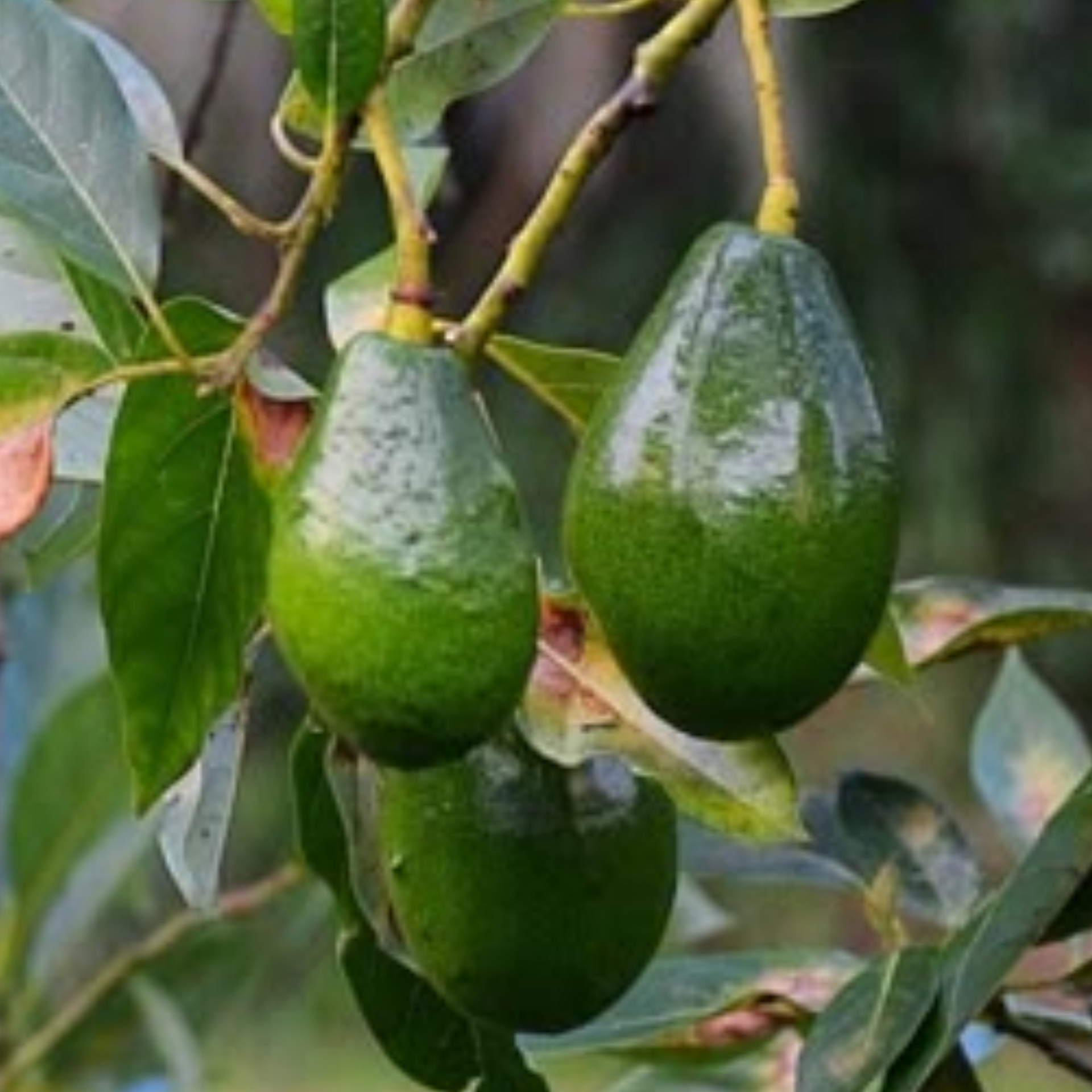
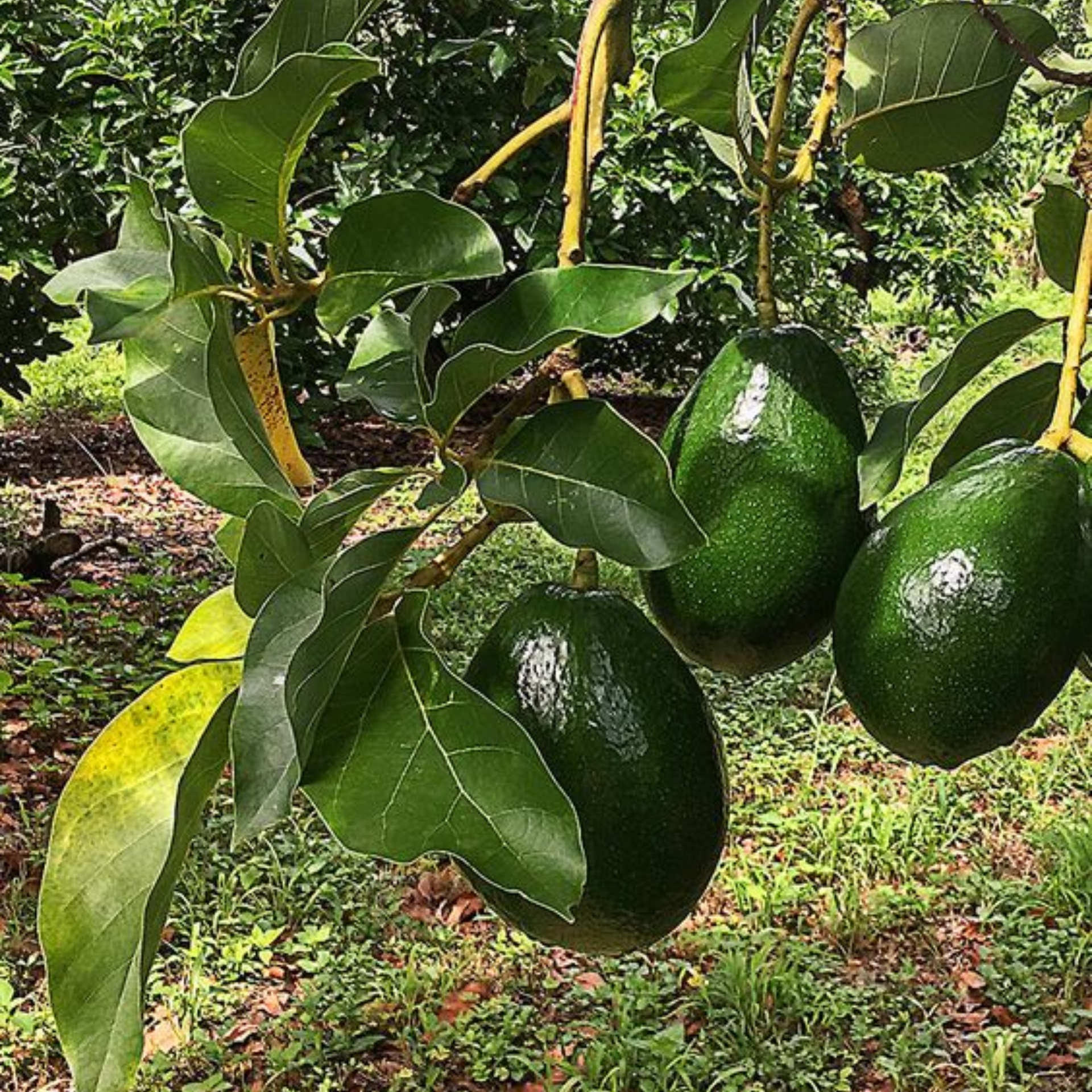
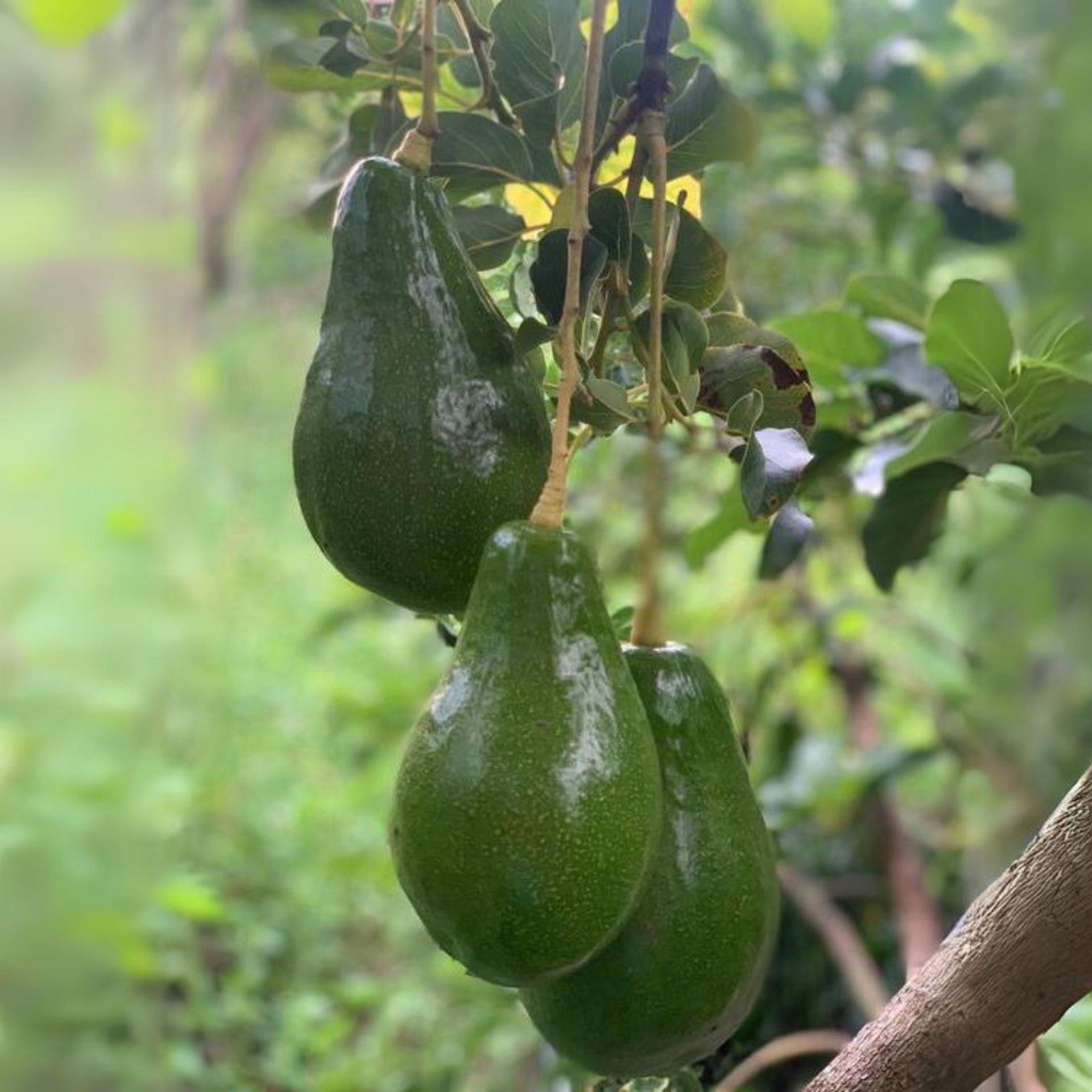
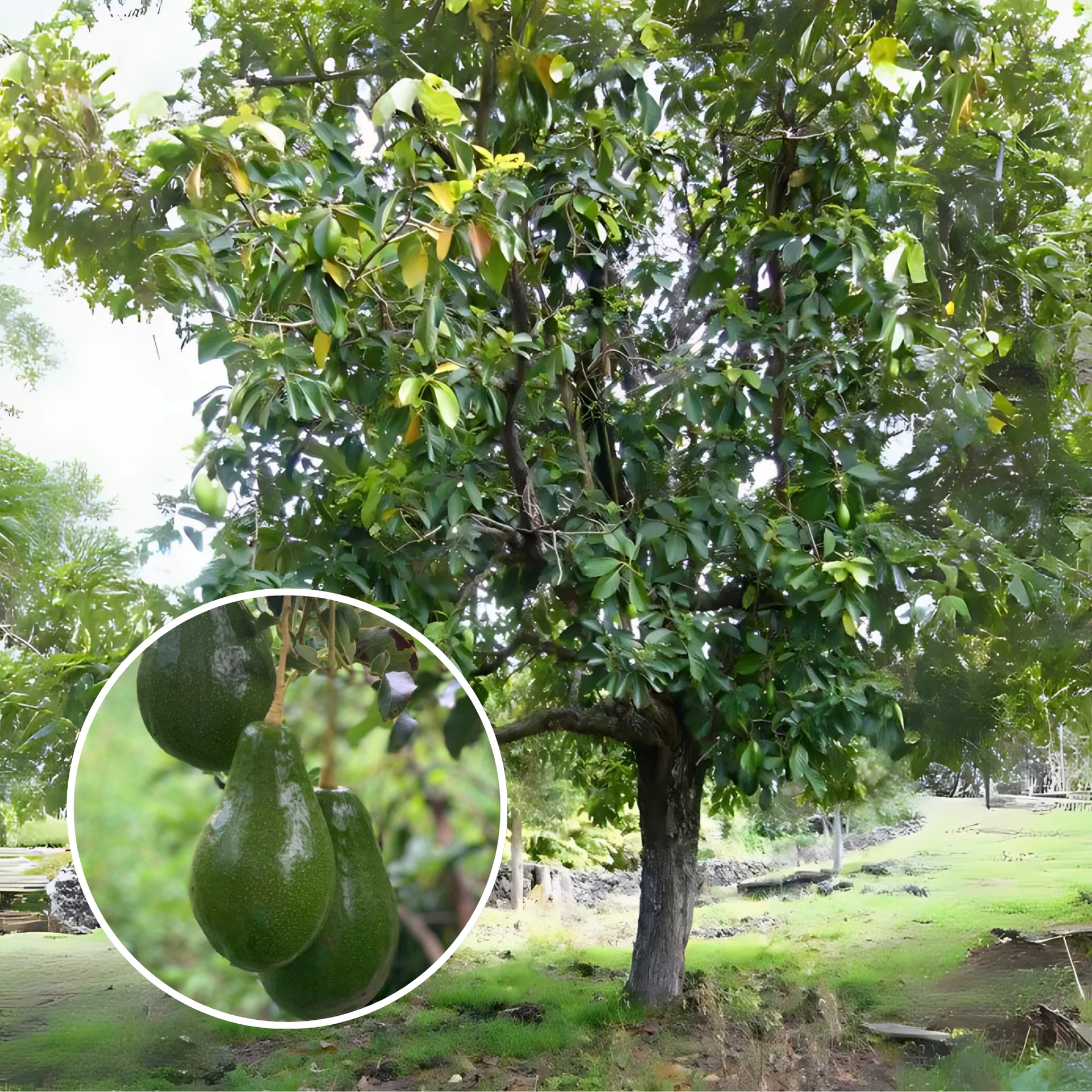

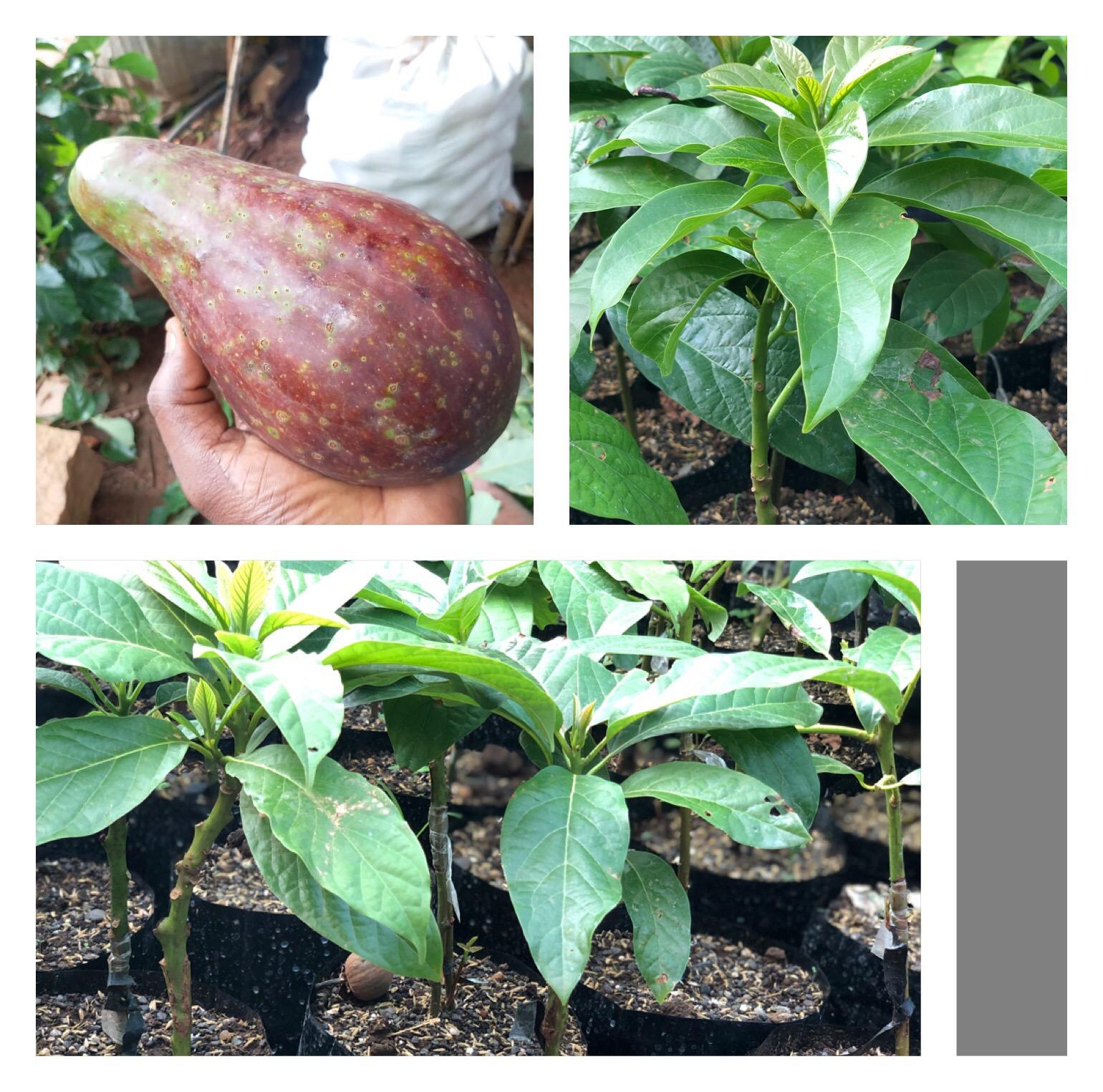
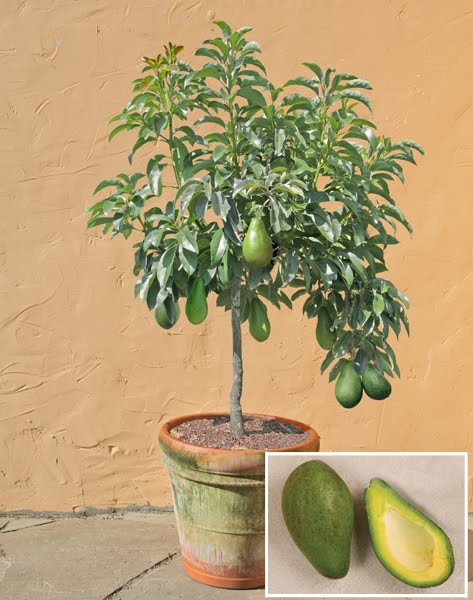
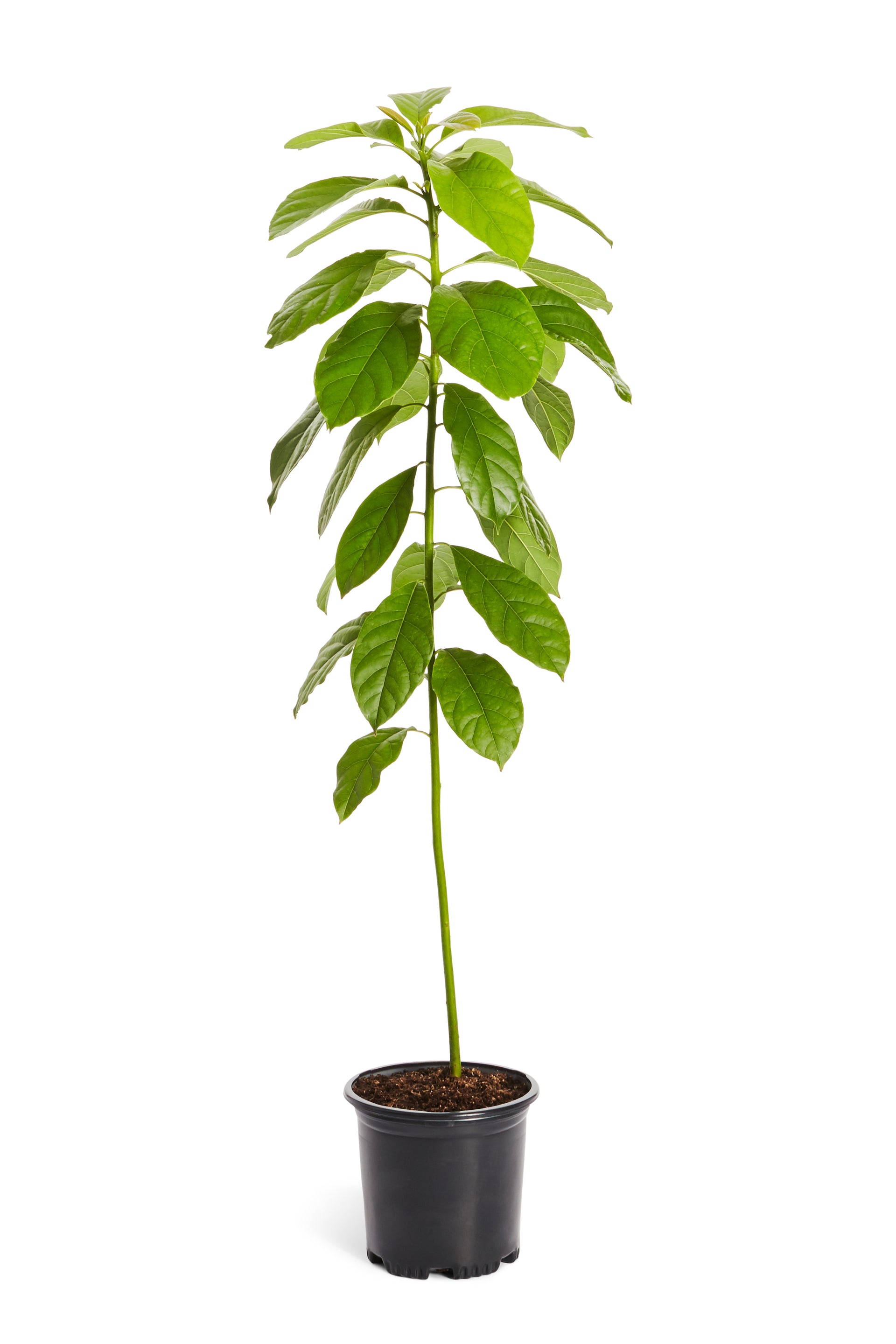
Avocado Fruit Plant Grafted Healthy greenish - purple Avacado Plant
Guaranteed Safe Checkout
The Green Gold: Exploring the World of Avocado Fruit Plants
About Avocado Fruit Plant
- The avocado, also known as "green gold" or "butter fruit," is a fruit that needs no introduction.
- Its creamy texture and unique flavor make it a favorite in salads, sandwiches, and of course, as the primary ingredient in guacamole.
- But have you ever wondered about the plant that produces this beloved fruit? In this article, we'll take a closer look at the avocado fruit plant, its origins, characteristics, cultivation, and the numerous health benefits it offers.
- Avocado plants, scientifically known as Persea americana, are believed to have originated in south-central Mexico.
- They have a history that dates back thousands of years, with evidence of their consumption by pre-Incan and Incan civilizations.
- Spanish explorers encountered avocados in the early 16th century and introduced them to Europe.
- From there, avocados eventually found their way to various parts of the world, including Asia, Africa, and the United States.
Plant Characteristics
- Avocado trees are evergreen and can grow to be quite large, reaching heights of up to 60 feet or more.
- They are known for their dark green, glossy leaves that can be elliptical, oval, or lance-shaped, depending on the variety.
- The fruit, the part we're most familiar with, is technically a large berry with a single large seed.
- The most common avocado variety is the Hass avocado, which has pebbly skin that changes from green to purplish-black as it ripens.
Cultivation
- Cultivating avocado trees requires a warm, tropical or subtropical climate.
- They are sensitive to frost and should be protected in colder regions.
- The trees are usually grown from seeds, but this doesn't guarantee that the resulting plant will bear fruit identical to the parent tree.
- Commercially, avocados are often propagated through grafting or budding to maintain the desirable traits of specific avocado varieties.
- The trees thrive in well-draining soil and require regular watering.
- Unlike many fruit trees, avocados bear fruit throughout the year, although they typically have a distinct harvesting season depending on the region.
Health Benefits
- Avocado is often celebrated for its nutritional value.
- It's rich in healthy monounsaturated fats, which are good for heart health, and it's a good source of fiber, vitamins, and minerals.
- Avocados are also unique in the fruit world because they are relatively high in calories due to their fat content.
- However, this fat is considered healthy and can help with weight management and satiety.
- The fruit is also packed with potassium, which can help regulate blood pressure, and it contains a variety of antioxidants and anti-inflammatory compounds that may help reduce the risk of chronic diseases.
Versatility in the Kitchen
- Avocados are incredibly versatile in the kitchen.
- They can be sliced and added to salads, mashed for guacamole, or spread on sandwiches.
- They're also a popular addition to smoothies and are used in various culinary traditions worldwide.
Cultivating Green Gold: A Guide on How to Grow
Avocado Fruit Plants
- Avocado, also known as the "butter fruit" or "green gold," is a delectable and nutritious addition to any kitchen.
- While avocados are readily available in grocery stores, there's nothing quite like the satisfaction of growing your own tree and harvesting those creamy, green fruits right in your backyard.
- In this guide, we'll walk you through the steps of growing your very own avocado plant, turning your garden into an avocado haven.
Selecting the Right Variety
- The first step in growing avocados is choosing the right variety.
- There are many types to choose from, but the two most common are the Hass and the Fuerte.
- Hass avocados are famous for their rich, creamy texture and nutty flavor.
- The Fuerte avocado has a milder taste and is slightly more cold-tolerant.
- Select the variety that suits your taste and climate.
Planting Avocado Seeds
- While you can grow avocados from a seed, it's important to understand that the resulting tree may not produce fruits identical to the parent plant.
- To start, carefully remove the pit from a ripe avocado, clean it, and allow it to dry.
- After a few days, plant the seed in a pot with well-draining soil, leaving the top half exposed.
- Water it thoroughly and keep the soil damp but not wet.
- Place the pot in a sunny spot, and in a few weeks, you should see the seedling emerging.
Transplanting and Caring for Seedlings
- Once your avocado seedling is about 6 inches tall, it's time to transplant it into a larger pot or into your garden.
- Avocado trees need well-draining soil to thrive, so make sure your planting site or pot has good drainage.
- As the tree grows, it's essential to ensure that the soil remains consistently moist, but not soggy.
The Role of Sunlight
- Avocado trees love sunlight. They require at least six hours per day of direct sunlight.
- If you live in a region with harsh winters, consider planting your avocado tree in a container that you can move indoors during the colder months.
Pruning and Shaping
- Pruning helps the avocado tree maintain a strong structure and encourages better fruit production.
- When the tree reaches about 12 inches in height, trim it back to encourage branching.
- Continue to prune to shape your tree and remove dead or diseased branches.
Fertilization
- Avocado trees are heavy feeders and benefit from regular fertilization.
- Use a balanced, slow-release fertilizer, rich in micronutrients, to nourish your tree.
- Make sure to adhere to the recommended application rates.
Patience and Pollination
- Growing an avocado tree from a seed requires patience.
- It can take several years before the tree is mature enough to produce fruit, and it may take even longer for the fruit to appear.
- Keep in mind that some avocado varieties are self-pollinating, while others may require a nearby companion tree for cross-pollination.
Pest and Disease Control
- Keep a close eye on your avocado tree for signs of pests or diseases.
- Common issues include scale insects, mites, and root rot.
- Early detection and prompt action are essential to keep your tree healthy.
Harvesting Your Avocados
- The moment you've been waiting for – the avocado harvest.
- Avocado fruits are typically ready for picking when they change from bright green to a darker shade, depending on the variety.
- To check for ripeness, gently squeeze the fruit. If it yields slightly, it's ready to be picked.
- Allow the avocados to ripen further on your kitchen counter, and enjoy the fruits of your labor.
Growing your own avocado tree can be a rewarding and delicious experience. While it may take some time and care, the satisfaction of harvesting your avocados is worth the effort. With the right selection, diligent care, and a little patience, you can turn your garden into an avocado paradise, providing you with a steady supply of green gold for years to come. So, roll up your sleeves, get your hands dirty, and watch your avocado tree flourish.
The avocado fruit plant, with its fascinating history, lush appearance, and exceptional nutritional value, has captured the hearts and palates of people across the globe. Its versatility in the kitchen and numerous health benefits make it a truly unique and beloved addition to our diets. Whether you're enjoying it as a topping for your morning toast or as the star of your favorite dip, the avocado's appeal is undeniable, earning it the reputation of "green gold" in the world of fruit plants.













